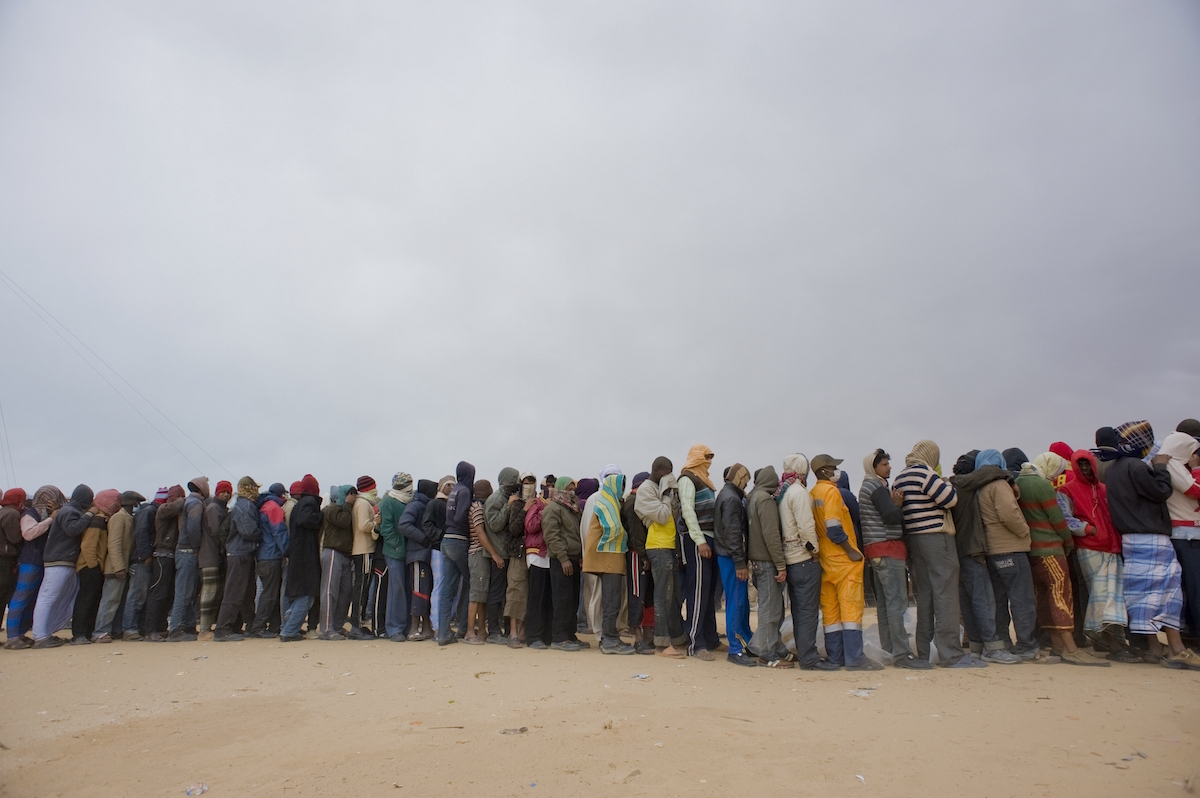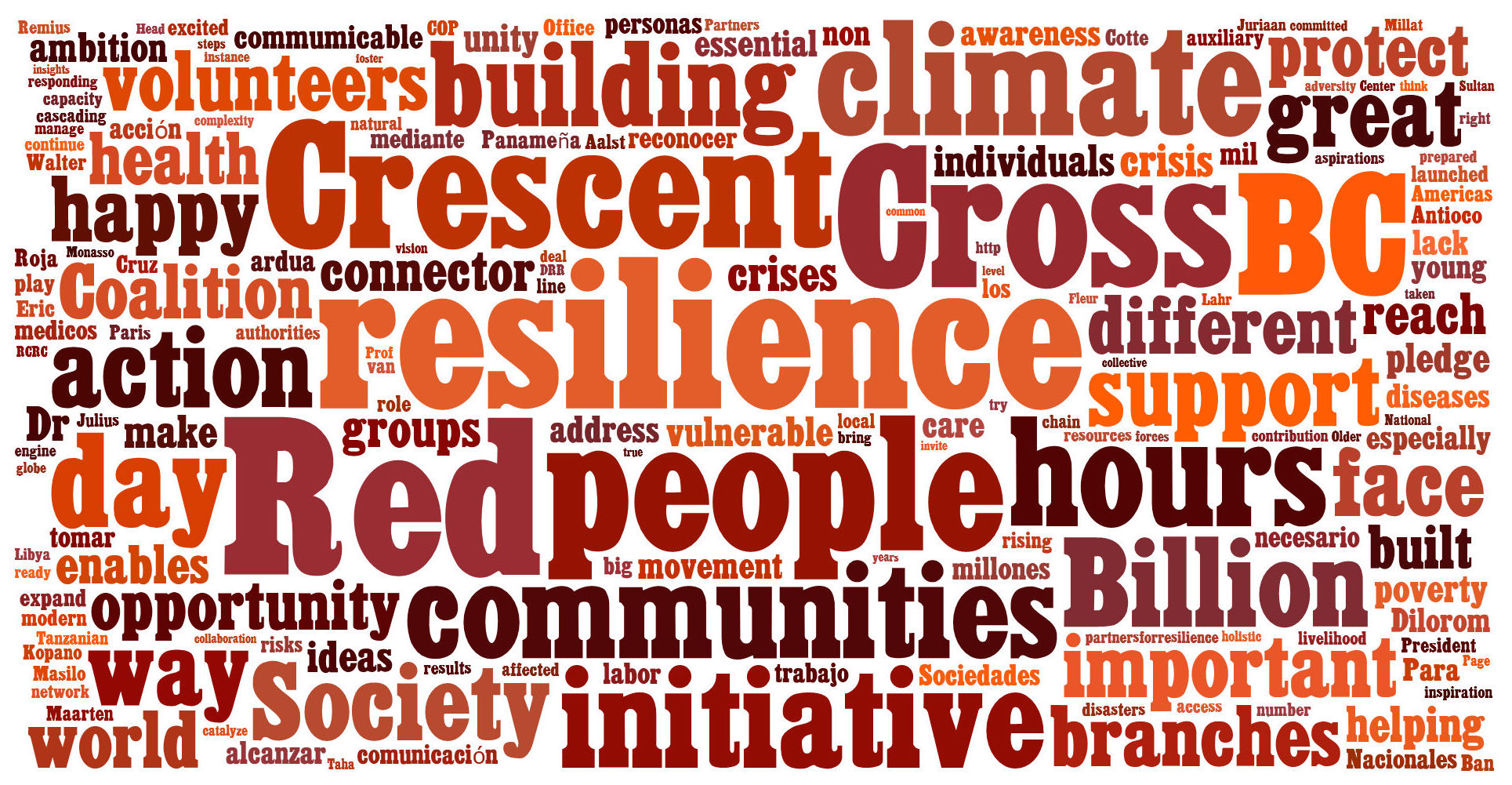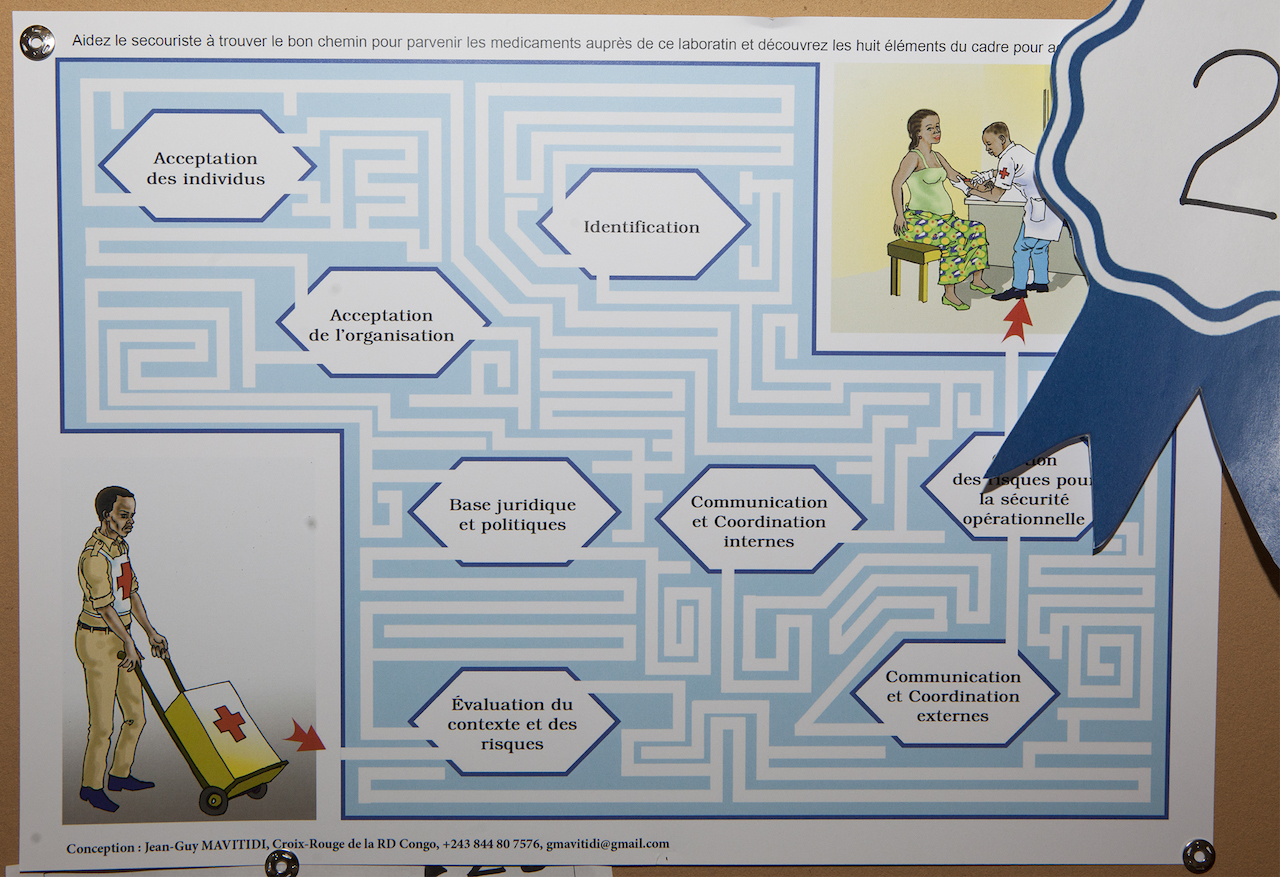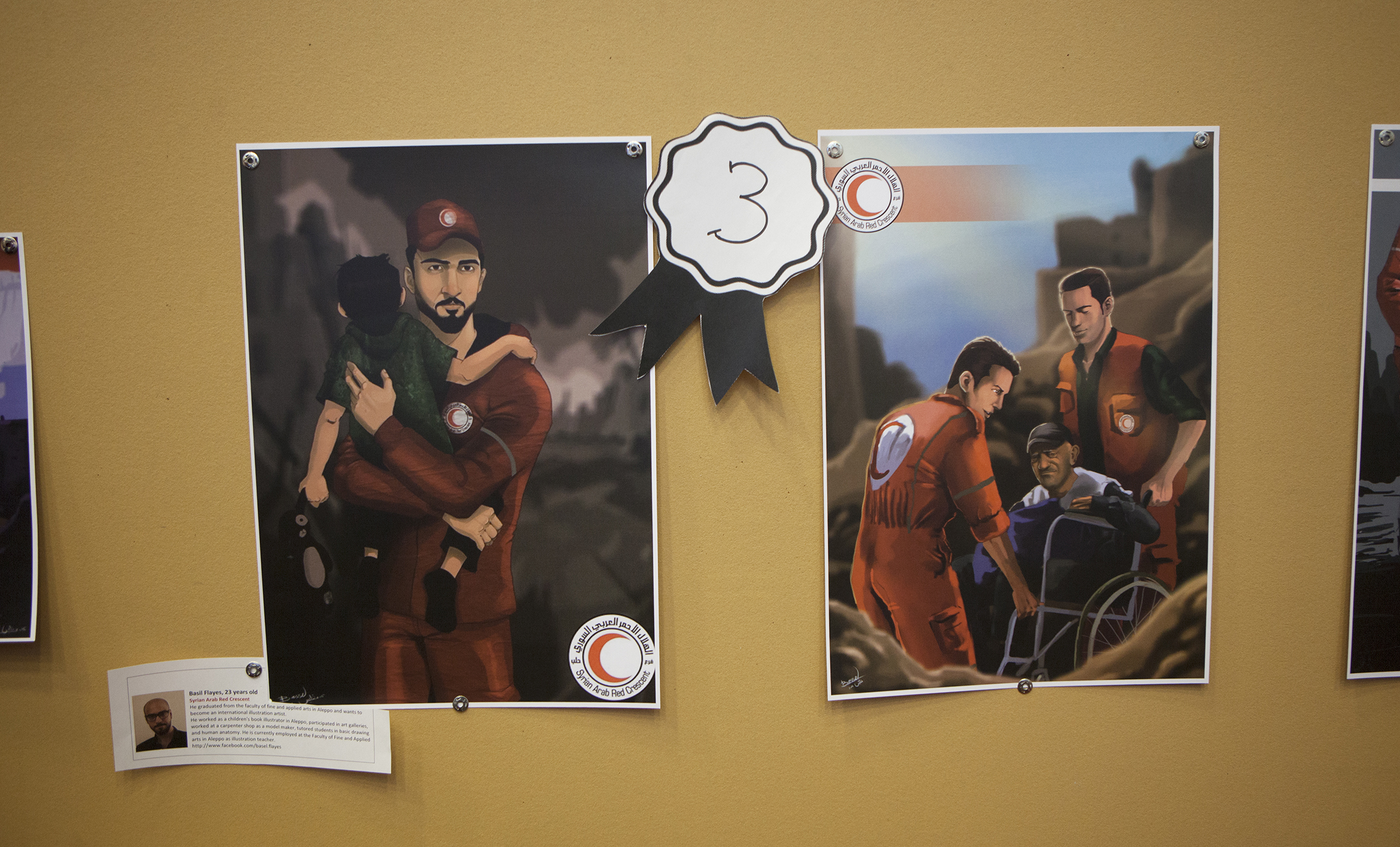International Red Cross and Red Crescent Movement reaffirms the need to protect the dignity and safety of all migrants

Migration was the focus of the second day of the Movement’s 32nd International Conference, kicking events off with a plenary “Focus on Migration” featuring the ICRC, the International Federation, the Mexican Red Cross, IOM, UNHCR, and the African Union.
Chaired by Ms. Fatima Gailani who, as President of the Afghan Red Crescent Society, a National Society operating in a country of origin for many migrants, was visibly touched by the issue lending the event a palpable sense of urgency. “It’s like in each country, we hear the same story,” she said.
The panellists spoke on a variety of experiences in dealing with migration challenges, but one theme seemed to prevail: together, in providing a complementary approach, we can and we must do more. But, humanitarian assistance should be complemented by State action.
“Firstly there is a need for a concerted action among National Societies in the affected region; second and more importantly it is necessary that Governments upgrade their public policies regarding migration,” said Mr. Carlos Freaner, Vice President of the Mexican Red Cross, speaking of the American experience.
“Through the establishment of adequate protection and assistance mechanisms, States should address effectively the terrible suffering migrants currently endure along the migration route, which include violations of their basic rights, extortion, physical and psychological violence, and lack of an effective response,” Mr. Freaner said.
UNHCR’s Assistant High Commissioner for Protection, Volker Türk, complemented this view on doing more, together. “The partnership that we enjoy with the ICRC, the International Federation and the National Societies is extremely important… The National Societies have this incredible network of volunteers, who are on the front line and a very concrete manifestation of people to people solidarity in a time of populist politics and xenophobia.”
The leaders of both the International Federation and ICRC reminded States of the need to develop policies and laws that put people at the centre.
“States do have security concerns. These are legitimate but they cannot be the centre of their migration policies at the cost of humanitarian considerations and respect for the rights of all migrants. In other words, security imperatives must not supersede the humanitarian imperative,” said Yves Daccord, ICRC Director-General.
“Do more, do it better, do it faster, because every minute counts,” concluded International Federation Secretary General Elhadj As Sy. “The terms ‘migrants’, ‘refugees’, ‘people on the move’: these are only situations in which people can find themselves in, they are not identities. We must protect people, not borders.”
The International Federation and the ICRC have signed a joint Pledge reaffirming their commitment to do more for vulnerable migrants. The high-level talks in Geneva build on commitments set out in Resolution 3 of the 31st International Conference in 2011, endorsed by States and the Movement.
One Billion Coalition for Resilience
Today, the One Billion Coalition for Resilience was launched in a commission drawing together key voices and perspectives on effective partnership and coalition-building for resilience.

Visitors to the International Conference have been talking about their ideas for improving resilience. See more on our Tumblr.
Mr. Elhadj As Sy, Secretary General of the International Federation of Red Cross and Red Crescent Societies, reaffirmed the commitment to addressing the critical gap in community-based resilience by convening the One Billion Coalition, and facilitating action to achieve the ambitious mandate of the Sustainable Development Goals.
During the commission, Mr. As Sy asked critical questions on what constitutes success: “Do we measure our success by reaching an ever-growing number of people affected. Or do we take action and call success a reduction in the number of people vulnerable to increasing disasters and risk?”
Mr. Neil McFarlane, Chief of Regional Coordination and National Implementation Unit, UNISDR, suggested that communities, towns and cities can be supported to take action through very simple initiatives, and that action and coalitions must remain inclusive – as no one organization has all of the answers.
Commission: Health Care in Danger
The security of health care personnel, facilities and medical transport is of fundamental importance for the wounded and sick, both civilian and military – and for the sustainability of health care services as a whole during armed conflicts, disasters and crises.
Violence against health care personnel, facilities and medical vehicles can paralyze the delivery of emergency or life-saving medical assistance precisely when it is mostly needed, resulting in disastrous effects on local communities. In 2011, the International Red Cross and Red Crescent Movement decided to address this important humanitarian challenge through a multi-year initiative: the Health Care in Danger (HCiD) project.
Based on Resolution 5 of the 31st International Conference, the Movement mobilized its delegations and National Societies, States, the health community and other partners to scale up action in the field, make practical recommendations for ensuring the safe delivery of health care, and to carry out activities to strengthen protection of the sick and wounded; health care personnel, facilities and transport, and to improve safer access and impartial delivery services.
Volunteer profile
Tarig Isaac Ahmed Aldouma figures it was about ten years ago when he got a new lease on life. On his way with fellow volunteers from The Sudanese Red Crescent to help evacuate the injured following an attack in Khartoum, the team came face-to-face with rebels. “They pointed their guns at us. We just knew that we would be dead. I was terrified,” said Tarig. “Then suddenly they put down their guns and let us pass. They had seen our emblem and understood what it meant. It was amazing to see the power of humanity in action.”
In the ten years since, Tarig says the security situation has improved in Sudan. “It is more safe now, more secure,” said the 35-year-old. “I interact with normal people living normal lives in normal communities.”
He joined The Sudanese Red Crescent in 1999 at the age of 19, volunteering mainly in providing first aid. Years later when Sudan was on the verge of separation, Tarig and his colleagues worked to help build Red Cross branches for their new neighbour, South Sudan.
“We don’t think like politicians,” explained Tarig. “We have the concept of the Movement and had to do our best to help our new sister National Society.”
Sixteen years after joining the Movement, Tarig has come full circle. He is now a staff member, given the task of developing his National Society’s volunteer programme, both in terms of maintaining a solid database of active volunteers, and in ensuring those volunteers are well trained. “I have never thought of it that way before – coming full circle,” said Tarig, “but it’s correct. I started as a young volunteer and now I am helping other young volunteers to grow.”
Side event
“The Pacific Islands are small islands, yet they are disproportionately affected by natural disasters. They are all small, isolated, and usually scattered over a large expanse of ocean, which make access to anything difficult. They are susceptible to climate change and natural disasters, and of course we have seen not only an increase in the number of disasters in the Pacific but also in their intensity,” stated Her Excellency Nazhat Shameem Khan, Ambassador of Fiji to the UN, in an overview of the region to start the side event “Strengthening legal preparedness for disasters and DRR”.
In this section, the participants shared the difficulties many National Societies face when humanitarian relief is needed. “We had received containers full of useless cloth or medicine,” said Jacqueline Deroin of Vanuatu Red Cross. “What we need is a more comprehensive framework that takes the realities of our region into account.”
Side event
Consequences of the last atomic bomb are still being felt today, 70 years on.
Four key proponents of elimination of nuclear weapons – Peter Maurer, President of the ICRC; Knut Langeland, Norway’s Special Envoy; Thomas Hajnoczi, Austrian Permanent Representative; Patricia Lewis, Research Director of Chatham House; and Dr. Masao Tomonaga, Honorary Director of Japanese Red Cross Nagasaki Atomic Bomb Hospital – took the stage to discuss consequences and risks of nuclear weapons, and how the RCRC Movement should play a vital role to shape the debate on nuclear disarmament.
Each speaker articulated the case for elimination of nuclear weapons, all noting that the debate has moved beyond emotion to one backed with facts and figures. The panelists were unanimous on the point that the move towards elimination would require the political will of States (possessors and non-nuclear States) and increased awareness and commitment.
Exhibit
The Safer Access team is very pleased to announce the winner for the Safer Access art competition.
The first prize went to Nigeria Red Cross Society, an artwork by Abraham Adeyemo Adedayo (22 years old): Abraham is a member of Nigeria Red Cross, University of Ibadan Detachment and studies verterinary medicine at the University of Ibadan (Nigeria Primier University).
The second prize went to Red Cross Society of the Democratic Republic of the Congo, an artwork by Jean-Guy Mavitidi Kuntuala (50 years old): Jean-Guy has been a volunteer since 1996 and is a graphic designer for their internal bulletin called “Solferino”.
The third prize went to Syrian Arab Red Crescent, an artwork by Basil Flayes (23 years old): Volunteer with the Aleppo branch of SARC and a graduate from the faculty of fine and applied arts in Aleppo, where he is also currently employed as an illustration teacher.
The ICRC Safer Access team congratulates the very talented winners and thanks all participants for their incredible contributions!
Commission
On the15th anniversary of the United Nations Resolution 1325, the International Conference held, for the first time, a Commission on sexual and gender-based violence (SGBV).
Chaired by H. E. Nazhat Shameem Khan of Fiji, the Commission highlighted how SGBV represents one of the most serious forms of violence, which leaves often-irreparable wounds for survivors and their relatives. SGBV is used as a weapon of war in almost all conflicts, and it is also a prevalent risk in societies that have been affected by disasters.
Are humanitarian organizations missing out on the full potential of collaboration with private companies in finding solutions to today’s complex humanitarian problems? This was one of the questions behind a side event session on Tuesday that explored the benefits and pitfalls of partnership between the corporate and humanitarian sectors.
For humanitarians, corporations are often seen mainly as donors, rather than as partners who offer a range of expertise, problem-solving skills and technological capacity.
“We believe that if we bring our human capacity for innovation together with that of our partners, there will be a much more sustainable, longer-lasting multiplier effect,” said Ms. Katy Hartley, director of the Philips Foundation, established by the Netherlands-based global technology company Royal Philips. “So my message to the fundraisers is that if you are just looking at [the financial aspect], don’t talk to Philips because we can mean much more to you.”
Royal Philips, she noted, first worked with the Netherlands Red Cross during the First World War. That relationship continues today via a global partnership for innovation signed in January between the Philips Foundation, the Netherlands Red Cross, and the ICRC, which focuses on exploring innovations and technology that could help provide immediate relief to people in regions affected by humanitarian crises.
Ms. Susan Ngonga, managing director of the Kenya Red Cross Society’s emergency medical service, brought a similar message. She gave several examples of how the National Society teamed up with national telecom companies to allow customers to easily donate to Red Cross relief efforts ranging from a major regional drought in 2010-11 to the attack on the Westgate shopping mall in 2013. Similar partnerships led to a text message campaign to reduce post-election violence; support a long-term agriculture and livelihoods programme, and develop a natural disaster early warning system.
Audience members expressed both enthusiasm and wariness about expanding the role of corporations in humanitarian action. But most also agreed that corporations, which must continually innovate to survive in ever-changing markets, have much more to offer humanitarians than just their chequebooks.
Exhibition spaces
Humanitarian Dialogue
Using an innovative methodology, the disaster risk and climate change session of Humanitarian Dialogue: A Vision Lab engaged the participants in implementing a different approach in order to think and address solutions to the humanitarian consequences of climate change.
With the wall covered in drawings, as well as an artist’s sketch of the session dialogue, the participants were able to build a safe space, thinking both as individuals and also as a part of a community.
The overall objectives of the session were to raise awareness and create a constructive space in order to bring local issues to the global agenda, and inspire action regarding these humanitarian issues.
During the session, participants were split into five groups to discuss topics including integrating disaster and climate risk information into planning and investment decisions; governance, and resourcing and funding.
Svenja Rüger, facilitator of the session, said: “What we are after with this Humanitarian Dialogue is finding solutions for local problems.
“We are aware that, when we talk about climate change, there is a gap between the global framework and how it is actually implemented at local level. That is what the session is all about. The main objective is to be very concrete and for them to look at the outcomes of the whole session and see what they have in common, because all these topics are connected.”
The groups all presented the results of their discussion, and after a session of analysis they found four elements in common:
- Engage with local community
- Top down versus bottom up
- Policy, investment and practices interconnected
- Accountability.
“I think that because this is a safe space, ideas can bubble up probably a lot easier than in a different setting. These ideas will be inserted into the Vision Lab, where there are many members of Government and high-level National Society participants. The final outcome will be presented at the plenary the last day of the Conference,” said Svenja.




